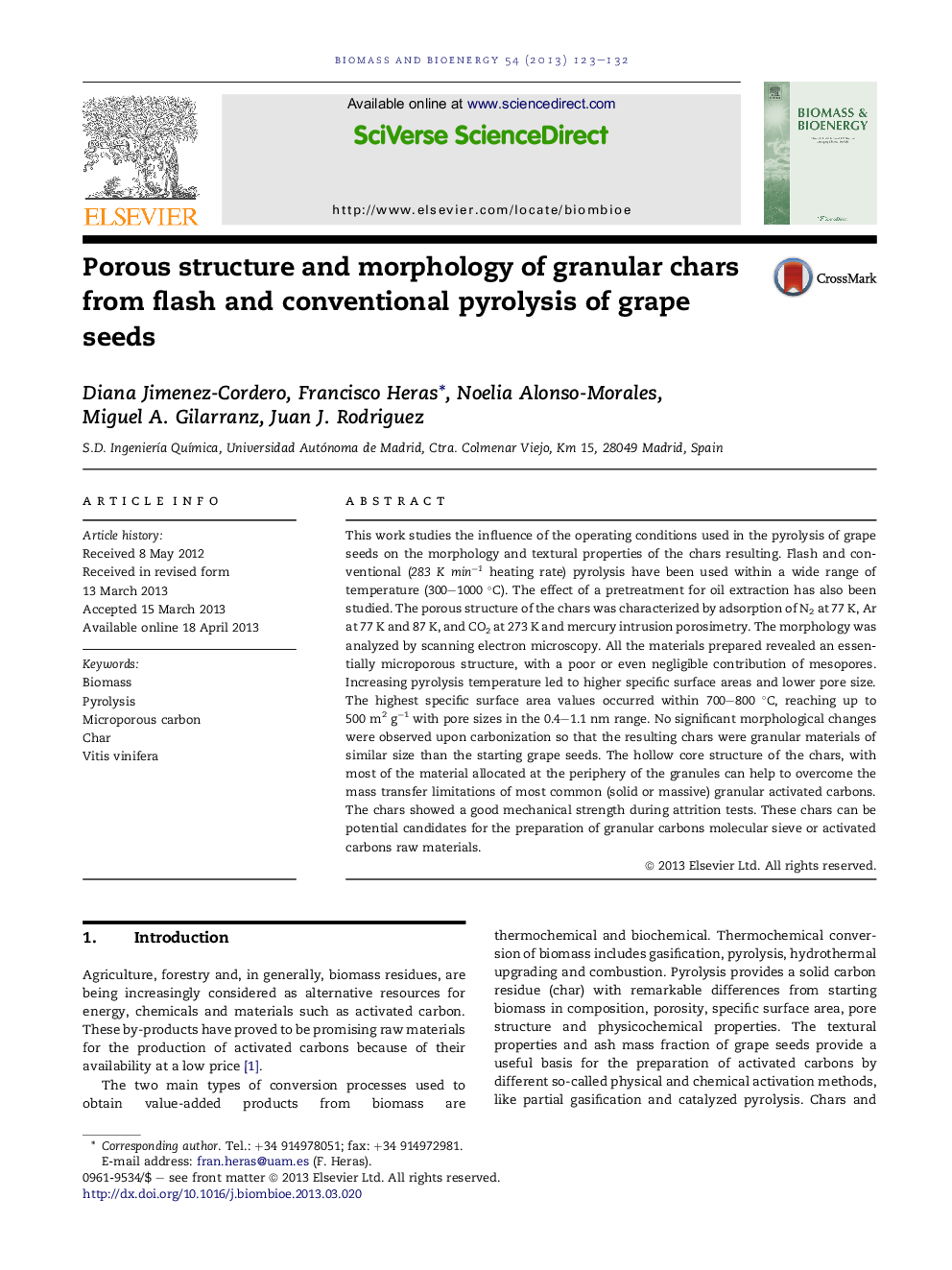| Article ID | Journal | Published Year | Pages | File Type |
|---|---|---|---|---|
| 677112 | Biomass and Bioenergy | 2013 | 10 Pages |
•We use a raw material that has a very low price and a high availability.•Not very much attention has been paid to this waste for carbonaceous materials preparation.•The chars obtained have high specific surface area that is an interesting starting point for later activation processes.•The chars show a micro-macro porous bimodal distribution.•Pyrolysis does not affect to morphology or initial seed, leading a carbonized particles with a hollow core structure.
This work studies the influence of the operating conditions used in the pyrolysis of grape seeds on the morphology and textural properties of the chars resulting. Flash and conventional (283 K min−1 heating rate) pyrolysis have been used within a wide range of temperature (300–1000 °C). The effect of a pretreatment for oil extraction has also been studied. The porous structure of the chars was characterized by adsorption of N2 at 77 K, Ar at 77 K and 87 K, and CO2 at 273 K and mercury intrusion porosimetry. The morphology was analyzed by scanning electron microscopy. All the materials prepared revealed an essentially microporous structure, with a poor or even negligible contribution of mesopores. Increasing pyrolysis temperature led to higher specific surface areas and lower pore size. The highest specific surface area values occurred within 700–800 °C, reaching up to 500 m2 g−1 with pore sizes in the 0.4–1.1 nm range. No significant morphological changes were observed upon carbonization so that the resulting chars were granular materials of similar size than the starting grape seeds. The hollow core structure of the chars, with most of the material allocated at the periphery of the granules can help to overcome the mass transfer limitations of most common (solid or massive) granular activated carbons. The chars showed a good mechanical strength during attrition tests. These chars can be potential candidates for the preparation of granular carbons molecular sieve or activated carbons raw materials.
